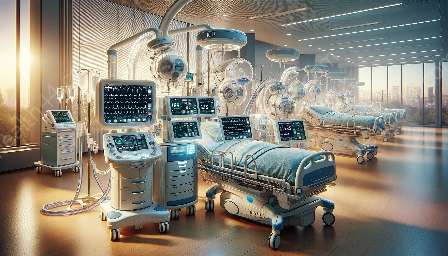Portable oxygen concentrators have revolutionized the way individuals with respiratory conditions manage their health. These compact devices are designed to provide a constant flow of oxygen, making them a vital component in life support systems, as well as in the realm of medical devices and equipment. In this comprehensive guide, we will delve into the technology, benefits, and considerations surrounding portable oxygen concentrators, exploring their compatibility and impact on life support systems and medical devices.
The Evolution of Portable Oxygen Concentrators
Portable oxygen concentrators are innovative devices that have reshaped the experience of individuals requiring supplemental oxygen. Unlike traditional oxygen tanks, these concentrators utilize advanced technology to extract oxygen from the surrounding air, making them portable, lighter, and more convenient for users. The evolution of portable oxygen concentrators has brought about increased mobility and independence for those in need of continuous oxygen therapy.
Compatibility with Life Support Systems
Portable oxygen concentrators play a crucial role in life support systems, particularly in the context of respiratory care. They offer a consistent and reliable source of oxygen, ensuring that individuals with respiratory conditions receive the necessary support to maintain their health and well-being. These concentrators can be seamlessly integrated into various life support systems, providing a constant supply of oxygen for patients, whether in a home setting or during travel.
Integration with Medical Devices and Equipment
Within the domain of medical devices and equipment, the compatibility of portable oxygen concentrators is of utmost importance. These devices can be integrated into ventilators, CPAP (Continuous Positive Airway Pressure) machines, and other respiratory support systems, optimizing the delivery of oxygen therapy to patients. Their ability to interface with a wide range of medical devices makes them a versatile and valuable asset in the medical field.
Benefits of Portable Oxygen Concentrators
The advantages of portable oxygen concentrators extend beyond their compatibility with life support systems and medical devices. These devices offer portability, allowing users to maintain an active lifestyle without being bound by the restrictions of traditional oxygen delivery methods. Whether engaging in travel, outdoor activities, or simply navigating daily life, portable oxygen concentrators empower individuals to reclaim their independence and mobility.
The Technological Advancements
Portable oxygen concentrators have undergone significant technological advancements, resulting in devices that are not only highly efficient but also compact and user-friendly. From enhanced battery life to intelligent oxygen delivery systems, these advancements have elevated the overall user experience, ensuring seamless integration into various medical and life support settings.
Considerations for Choosing a Portable Oxygen Concentrator
When selecting a portable oxygen concentrator, certain considerations come into play. Factors such as oxygen output, battery life, size, and weight are critical in determining the suitability of a concentrator for an individual's specific needs. Additionally, compatibility with existing medical devices and life support systems, as well as the availability of maintenance and support services, are essential elements to evaluate when exploring portable oxygen concentrator options.
Conclusion
Portable oxygen concentrators represent a significant advancement in respiratory care and medical device compatibility. Their ability to seamlessly integrate with life support systems and medical devices, coupled with their portability and technological advancements, makes them indispensable for individuals requiring supplemental oxygen. As the field of respiratory care continues to evolve, portable oxygen concentrators are set to play a pivotal role in enhancing the quality of life for those in need of continuous oxygen therapy.


